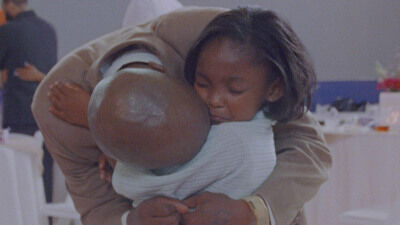
“Sugarcane” also addresses the pain of family separation and the generations of harm it can cause. Emily Kassie and Julian Brave NoiseCat’s searing documentary explores the intergenerational trauma carried by survivors of residential schools, especially the St. Joseph Mission near the Williams Lake First Nation, where conditions were so deplorable, former students still struggle to find the words to describe it. In 2021, unmarked graves were discovered near the now-closed mission, uncovering buried truths about what went on at residential schools where Indigenous children were punished for speaking their language or practicing their culture, forced to take up Christianity, and shamed for not being white. The film is so unflinching in its efforts to document the horrors that occurred, Sundance included a content warning for the descriptions of sexual and physical violence in the film.
Decades after the abuses took place, healing takes on different forms, following the experiences of NoiseCat and his father, Ed Archie NoiseCat, and other survivors like Rick Gilbert, both of whom were born at the mission as the result of priests sexually assaulting their mothers. Charlene Belleau, one of the Williams Lake elders spearheading the investigation, continues to exhume forgotten secrets and tales of abuse that others ignored for generations. The cameras kept rolling in “Sugarcane” as people grew quiet, their eyes well up with tears, or their fists shook in anger. It follows NoiseCat and his father as they grow closer and hit the road to visit family and search for answers. It watches Gilbert and his wife research his ancestry only to find that he’s related to one of the former priests who led the Catholic school. It follows Belleau as she reads aloud each painful testimony, bringing their words back to life from beyond the grave.
Kassie and NoiseCat’s documentary leaves behind a haunting question: how many more millions of Indigenous people were abused at residential schools? How many have similarly horrific stories to unearth after decades of suppression? It’s a window into unspeakable pain and a step towards acknowledging and mourning the souls lost in such a humanitarian catastrophe, all while paying tribute to the community today as it continues to rebuild after this atrocity.

“Porcelain War,” explores a topic straight from yesterday’s front page—the ongoing war between Russia and Ukraine—from the workbench of a pair for artists who make porcelain figures and their family friend and painter-turned-cameraman. Before the war, husband and wife team Slava Leontyev and Anya Stasenko worked together to make small-but-impressive figurines, like small owls painted delicately with gold and figures within the figure, a snail whose shell tells a story, a small dragon that looks like he would accept some pets.

